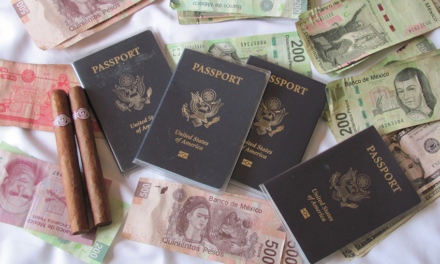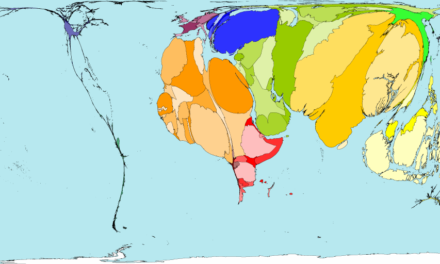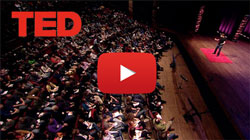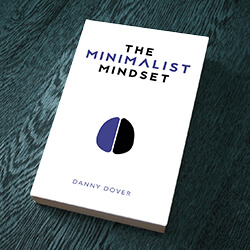I am going a different direction this week and posting some of my old work. Let me know what you think about this style. Should I post more of it?
He wakes up at 7:31 AM just like the day before. With ignorance as his shield, he ventures out into a world without privacy.
The young man (a title given to him by his mother) sits submissively in his bed and idly scans e-mail on his phone. Another notice from his bank, a forwarded e-mail from his friend, five new e-mails from his co-workers, and an intimate message from a girl he met last weekend at a party. He suppresses a smirk, she is toying with him and he knows it.
Unbeknownst to him, four copies of his private e-mail are stored in locations around the world. The first is stored locally on his phone, a second on a search engine giant’s servers, a third on a consumer electronics company that he forwards his e-mail through and a fourth on the massive social network’s servers where the flirty message originated. Each of these copies are duplicated across servers for the safety of redundancy. Four separate corporations, run by people he will never meet, store his most private messages. A fifth corporation, a telecommunications conglomerate, logs the entire process and associates it with his account.
After checking his e-mail, he pulls himself out of bed, takes a shower, and eats a homemade breakfast burrito. Just wearing a towel, he glances over to see if his blinds are closed. He is most conscious of his privacy when he is alone.
He pulls his favorite shirt out of his closet (a medium sized black unlabeled t-shirt) and pulls it over his head. He leaves his apartment after double checking that he locked the deadbolt on his front door.
Unknown to him, he is video recorded as he leaves his home by his apartment’s security system. The resulting tape is scheduled to be stored in a permanent archive.
He walks the two blocks to his bus stop just in time to catch the 43. He sits down on his normal seat on the bus (between the middle door and the support pole) and puts in his headphones. For the entire 30 minute duration of the ride, none of the 23 people on the bus make eye contact with each other. The bus driver lazily and incoherently babbles into the onboard PA.
When he first got on the bus, he scanned his bus pass which logged his account identifier into the metro system. After doing so, he walked by an on-board microphone that was set to record the entire bus. At the same time he was recorded by two different video cameras on the ceiling of the bus. As he travels down the road, the GPS in the bus sends its coordinates back to the bus station.
Meanwhile 23 other GPS enabled devices sit in the pockets of the passengers. In any of those cell phones ring, they will enable microphones that would pick up and transmit the man’s voice. Even if the GPS features are disabled, the cell phones can still be triangulated via cell towers. In the off chance that both the GPS features and cell networks were disabled, the Internet enabled phones could still be geo-located when they accessed public WiFi routers. Together there are 70 different ways that the man sitting in his favorite seat on the bus could be tracked.
He sits calmly and listens to the Garden State Soundtrack for the 46th time.
Eventually he reaches his stop and steps off the bus and into the city. Adjusting his earphone, he starts the short hike to work. He nods at the police officer who is stopped at a red light. The cop doesn’t nod back.
As he walks the half mile from his bus stop to his office, he is recorded by 4 different video cameras. The first is in the police car, the second and third are intersection cameras and the final camera is in the ATM he walks by.
He eventually makes it to his office building and continues up the staircase. He says “hi” to the friendly man at front desk, grabs a glass of water and unpacks his laptop. He greets his co-workers and eventually settles at his desk.
As he entered the office building, he swiped his card and was identified as having opened the door. This action was stored in a remote database. He then walked into the office where he entered a room with 25 other cell phones. There are also 26 computers. Together there are over 50 different devices that can access the internet. Each of them identify their location and general details every time they connect to a server.
The privacy conflicts that the young man encountered in the offline world are nothing compared to those he will encounter later today in the online world.
He sits down at his desk and loads up all of his normal browser bookmarks to quickly skim the days news. He checks his e-mail again.
One of his friends sent him a link to an online video of a little kid singing a Beatles song. Having already seen it, he responds with a “lol” and switches tabs so he can skim the most popular articles on his favorite social news site. He clicks several of the corresponding links and is taken to some websites with various clever images and lists. The content is designed to be consumed quickly. He digests it like watching a flip book.
Around the office he hears erratic bursts of laughter as his coworkers click the same links. Noticing this “popcorn effect” for the first time, he shares his thought on a micro blogging service.
As soon as the young man opened his Internet browser, his operating system immediately began logging each website he visited. When his homepage loaded, the action was logged by the search giant. This record is owned by the same company that owns the second website he visited to watch the music video. Both actions are stored somewhere on an unknown server. The third site he visits, his favorite social network, logs every action he takes and associated it directly with his account. The same is done for all of his friends.
After leaving that closed garden, he shares his popcorn thought with his acquaintances on the micro blogging service. His message is dispersed through a massive API where an untold number of services permanently store it and associate it with his account.
He has a similar experience when he browses his favorite social news website. All of his actions on the domain are stored and associated with his account. Even after he leaves this domain to view the day’s funny pictures and top ten lists, his actions are tracked either by the search engine giant or a large Redmond based software company.
At one point he isn’t on a page that displays ads by these major ad networks, but is instead tracked by a specific online retailer who has its own ad network. The online retailer associates his page views with his shopping account. All of this data is stored permanently and mined to ensure that the online retailer is able to maximize profits.
He finishes his morning internet round by buying tickets on a movie ticket site. The popular site stores his zip code and credit card details.
Later, after finishing a long day at work, he stops by his local grocery store to pick up a six pack of beer. He goes straight to the back of the store and brings the drink back to the register. Despite his facial hair, the clerk requests to see his ID. He complies and pulls it out of his wallet. The young man keys in his phone number in absence of his grocery store loyalty card so that he can save $0.50. The cash register prints out a receipt and the cashier shoves it in a plastic bag along with the purchase. The man thanks the grocer and continues on his way home.
As soon as he stepped into the grocery store he was picked up by one of about 20 video cameras that continually record shoppers. As he approached the checkout stand he started a three tiered identification process that rivals that of getting a Passport.
The first method was via government ID and was paradoxically the least useful to the grocery store. The cashier ignored his picture and instead focused on typing his birthdate into the register computer as speedily as possible.
The second form of identification was via his phone number that was tied to his grocery card number. This allows the grocery store to log all of the young man’s purchases. This data is later analyzed to determine spending patterns of different demographics and to identify sale combinations that maximize profits.
The final form of identification underwent the most analysis. The man’s credit card required an autograph. This transaction was stored by four different companies. The first was stored locally at the point of sale by the grocery store. The second was stored on his credit card’s servers. The third was on his bank’s servers and the final copy was stored on the servers of his favorite personal finance website.
As he finally gets back to his apartment he grabs the package from his doormat and settles down for the evening. He orders in a pizza because he is too tired to cook for himself. The young man finishes his day by splitting the beers with his roommate and watching a movie.
The package on his doorstep hints at only the tip of two data icebergs. The first one is owned by the online retailer and the second one is owned by a worldwide shipping company. His address and name are stored in massive databases owned by the two corporations. He will never have access to his information stored in shipping database. Records of the contents of the package, along with his credit card information are stored by the online retailer so that it can show relevant suggestions when he visits the website.
His address, phone number, name and pizza preferences are stored by the pizza company when he places his order. This transaction is also stored by the pizza place, his bank, the credit card company and his personal finance website.
His movie selection is stored on the server’s of the consumer electronics manufacturer from earlier. Again his financial transaction is recorded by four corporations.
Back in his bed, he looks at the calendar, the date is November 3rd 2009. This is not some day off in the distant future, it is today. This is not some made up character, this is my life and it extends directly into yours.
The balance between privacy and convenience is fickle. It is unproven and the rules are uncertain. Just because something is free online does not mean you are not making a sacrifice when you use it.
That said, I do not believe that sharing personal data for convenience sake is evil. Many times it is economical and even beneficial. The fact that your pharmacy has access to all of your prescriptions gives them the ability to check for potentially lethal interactions. This is fundamentally good. Policies like these save lives. Information is not a scarce resource like oil or coal, it is bountiful and truly limitless. I believe it should be up to the individual to decide what they want to do with their person data. After all, a few of the corporations above were opt in.
At some point in the future, I plan to completely open source my life. By this I mean, putting all of my personal data online. This will include everything from my browsing history to my digitized DNA. I have been conducting research on the ramifications of this for a little over a year and this article unveils some of the realizations I have had.
As you can see, the leap to throwing away my privacy is actually much smaller than I originally thought. In fact, both you and I are already almost all of the way there.
The references to major corporations made above were all real. The actual corporations are listed below with some relevant facts.
“search giant” – Google Inc.:
In addition to the data points listed above, Google is storing hundreds of other metrics about it’s users.
“consumer electronics“ – Apple Inc.:
Apple is rumored to be building a $1 billion data center so it is likely that more data like that mentioned in post will be stored in the future.
“massive social network” – Facebook Inc.:
In total, 25 Terabytes of user activity data is stored daily by the online social networking service.
“telecommunications conglomerate” – AT&T Inc.:
AT&T reported only has 20,268 servers. This is infantile compared to Google’s estimated 1,000,000 servers.
“micro blogging service” – Twitter Inc.:
Twitter recently peaked at 5,000 messages a second following Michael Jackson’s death. Odds are one of them was yours.
“social news site” – Digg Inc.:
Digg says that only about half of its server load is from visitors to its website. The other half is a mix of Digg buttons and API calls. This means a non-trivial amount of information that Digg collects is from people who are not even on the Digg domain.
“video provider” – YouTube Inc:
Youtube serves over 1,000,000,000 (billion) views a day. Odds are you are one of them.
“credit card company” – Visa Inc.:
The major credit card companies are now hiring psychologists and statisticians to mine your buying data and figuring out who is a liability.
“a large Redmond based software company” – Microsoft Corporation:
Microsoft is in the process of finishing one of the world’s biggest data centers in anticipation of creating the world’s first mainstream cloud-based operating system, Microsoft Azure. In Microsoft’s eye, the future is in your data. (Google and I agree)
“online retailer” – Amazon.com, Inc.:
Amazon has more 55 million active customer accounts.
“favorite personal finance website” – Mint Software, Inc:
Mint Software was recently bought by Intuit Inc. making its combined collection of personal finance information one of the biggest in the world.
“worldwide shipping company” – United Parcel Service, Inc.:
The United Parcel Service (UPS) can reach more than 4 billion of the earth’s 6.3 billion people to which it delivers more than 13.3 million packages each day.
“the pizza company” – Domino’s Pizza, Inc
Each of the 40,000 systems in the company’s franchises are connected to their global network. Your pizza order is not alone.
Originally posted at http://www.seomoz.org/blog/24-hours-without-privacy








